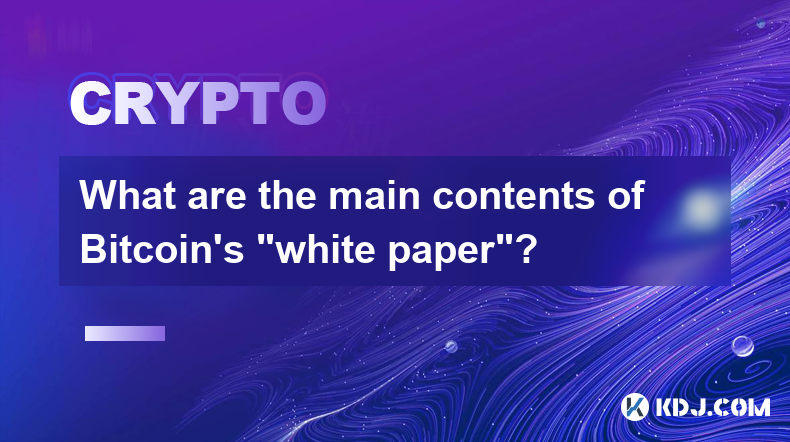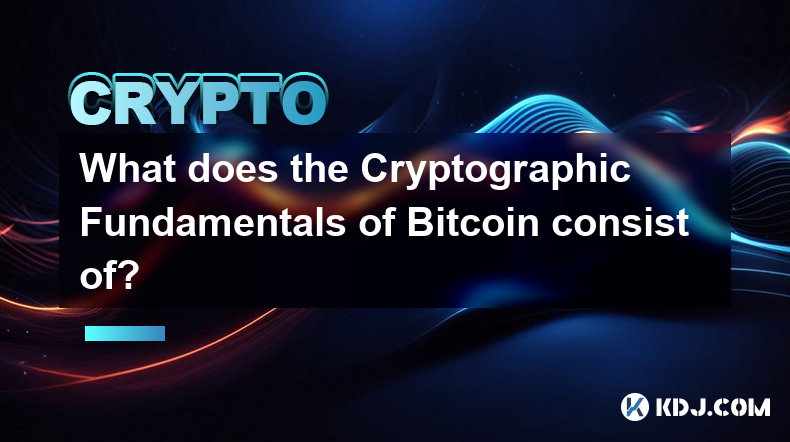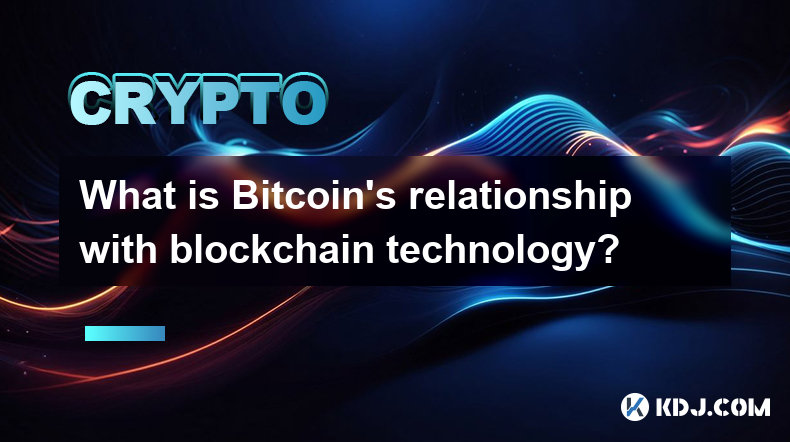-
 Bitcoin
Bitcoin $96,640.2391
-1.65% -
 Ethereum
Ethereum $2,774.9044
1.56% -
 XRP
XRP $2.5935
-0.94% -
 Tether USDt
Tether USDt $1.0000
-0.01% -
 BNB
BNB $661.2079
0.74% -
 Solana
Solana $173.1228
-0.78% -
 USDC
USDC $1.0000
0.02% -
 Dogecoin
Dogecoin $0.2460
-2.67% -
 Cardano
Cardano $0.7730
-3.13% -
 TRON
TRON $0.2359
-2.98% -
 Chainlink
Chainlink $17.8332
-2.31% -
 Avalanche
Avalanche $25.7255
1.25% -
 Sui
Sui $3.4300
-0.19% -
 Stellar
Stellar $0.3347
-0.39% -
 Litecoin
Litecoin $128.4555
-3.57% -
 Toncoin
Toncoin $3.6770
-0.21% -
 Shiba Inu
Shiba Inu $0.0...01556
-0.53% -
 Hedera
Hedera $0.2180
-0.53% -
 UNUS SED LEO
UNUS SED LEO $9.6924
-0.40% -
 Hyperliquid
Hyperliquid $24.6648
-2.80% -
 Polkadot
Polkadot $5.0984
-2.54% -
 MANTRA
MANTRA $7.5025
-0.29% -
 Bitcoin Cash
Bitcoin Cash $321.1194
-1.61% -
 Bitget Token
Bitget Token $4.9576
2.81% -
 Ethena USDe
Ethena USDe $0.9996
0.24% -
 Uniswap
Uniswap $8.9840
-2.46% -
 Dai
Dai $1.0001
0.03% -
 Monero
Monero $236.2089
0.29% -
 NEAR Protocol
NEAR Protocol $3.5181
0.81% -
 Pepe
Pepe $0.0...09660
0.25%
What are the technical specifications of the Litentry LIT coin blockchain?
Litentry's Proof-of-Identity consensus mechanism assigns validators voting weights based on their reputation and contributions to the network, incentivizing honest behavior and discouraging malicious activities.
Dec 30, 2024 at 03:20 pm

Key Points
- Overview of Litentry LIT Coin Blockchain
Technical Specifications
- Consensus Mechanism
- Block Time
- Block Size
Tokenomics
- Token Allocation
- Token Distribution
- Smart Contracts
Security Features
- Privacy
- Anonymity
- Scalability
Technical Specifications
Consensus Mechanism
Litentry utilizes a Proof-of-Identity (PoI) consensus mechanism. This mechanism assigns weights to validators based on their reputation and contributions to the network. Validators are responsible for verifying transactions and adding them to the blockchain, with those with higher weights having a greater influence in the decision-making process.
PoI seeks to promote a decentralized and secure network by incentivizing honest behavior and discouraging malicious activities. Validators who engage in improper conduct or fail to fulfill their duties may lose their reputation and, consequently, their weight in the voting process.
Block Time
The average block time for Litentry is approximately 6 seconds, making it a relatively fast and efficient blockchain. This ensures that transactions are processed and confirmed quickly, reducing waiting times for users.
Block Size
The maximum block size for Litentry is 1 MB. This provides ample space for transactions and data to be included in each block, while still maintaining acceptable block propagation times.
Tokenomics
Token Allocation
The total supply of LIT tokens is 100,000,000, with the initial token distribution as follows:
- Private Sale: 20%
- Seed Round: 10%
- Strategic Round: 10%
- Public Offering: 20%
- Team: 15%
- Foundation: 15%
- Ecosystem Development: 10%
Token Distribution
- Public Offering: LIT tokens will be distributed through a public sale conducted via a decentralized exchange. The percentage of tokens allocated for public sale may vary based on market conditions and investor interest.
- Team: LIT tokens allocated to the team will have a vesting period to ensure long-term commitment to the project.
- Foundation: LIT tokens allocated to the foundation will be used to support the development and growth of the Litentry ecosystem.
- Ecosystem Development: LIT tokens allocated for ecosystem development will be used to incentivize developers, integrate Litentry with other applications, and promote adoption and usage of the network.
Smart Contracts
Litentry's blockchain supports the development and execution of smart contracts, which are self-executing programs that enable the creation of decentralized applications on the network. These contracts facilitate transparent and automated execution of agreements, eliminating the need for intermediaries and minimizing the risk of fraud.
Security Features
Privacy
Litentry incorporates privacy-enhancing technologies to protect user data and transactions. The network utilizes zero-knowledge proofs, which allow users to verify their identities or attribute information without revealing the underlying data.
Anonymity
By default, Litentry transactions are not anonymous. However, users can opt to make their transactions anonymous by utilizing optional privacy features. These features enable users to conceal their identities and transaction details from other participants on the network.
Scalability
Litentry utilizes sharding to enhance the network's scalability. Sharding involves dividing the blockchain into smaller, parallel partitions called shards. This increases the network's transaction processing capacity by distributing the workload across multiple shards.
FAQs
Q: What is Litentry?
A: Litentry is a decentralized identity aggregation platform that provides a secure and efficient way for users to manage and share their identity data across multiple applications.
Q: What is the purpose of LIT tokens?
A: LIT tokens serve several purposes within the Litentry ecosystem, including governance, staking, transaction fees, and rewards for network participants.
Q: How can I store LIT tokens?
A: LIT tokens can be stored in any compatible crypto wallet, such as MetaMask or Ledger.
Q: Where can I buy LIT tokens?
A: LIT tokens can be purchased on various cryptocurrency exchanges, including Binance, Huobi, and OKEx.
Q: What is the difference between Litentry and other identity platforms?
A: Litentry stands out from other identity platforms by integrating with multiple blockchains, providing privacy and anonymity options, and enabling users to control and monetize their identity data.
Disclaimer:info@kdj.com
The information provided is not trading advice. kdj.com does not assume any responsibility for any investments made based on the information provided in this article. Cryptocurrencies are highly volatile and it is highly recommended that you invest with caution after thorough research!
If you believe that the content used on this website infringes your copyright, please contact us immediately (info@kdj.com) and we will delete it promptly.
- DTX Exchange: The Next Big Crypto Play That's Flying Under the Radar
- 2025-02-22 23:15:25
- SOL May Dip Lower Before Having an Explosive Rally, ETH Rival Solana (SOL) Analyst Says
- 2025-02-22 23:15:25
- Is Yeti Ouro Poised to Surpass XRP in the Crypto Market? Here's What You Need to Know!
- 2025-02-22 23:15:25
- DTX Exchange: The Potential Best Utility Coin of 2025
- 2025-02-22 23:15:25
- DTX Exchange (DTX) Attracts Ethereum (ETH) and Cardano (ADA) Holders With Unmatched Potential for Rapid Gains
- 2025-02-22 23:15:25
- Dogecoin Price Stagnation And Emerging Alternatives
- 2025-02-22 23:05:25
Related knowledge

What are the long-term investment risks of Bitcoin?
Feb 22,2025 at 05:30pm
Key PointsVolatility and price fluctuationsRegulatory uncertaintySecurity risksCompetition from altcoinsMarket manipulation and scamsTransaction feesEnvironmental concernsLong-Term Investment Risks of BitcoinVolatility and Price FluctuationsBitcoin's high volatility is a double-edged sword. While it has the potential to generate substantial returns, it ...

What are the main contents of Bitcoin's "white paper"?
Feb 21,2025 at 04:36am
Key Points:Understanding Bitcoin's Genesis: The White Paper's IntroductionA Decentralized Digital Currency: Bitcoin's Core ConceptBlockchain Technology: The Foundation of Bitcoin's Immutable LedgerProof-of-Work: Securing Bitcoin's NetworkThe Design of Bitcoin's Currency: Issuance, Scarcity, and DivisibilityBitcoin's Potential Applications and Future Pro...

How does Bitcoin's distributed ledger ensure consistency?
Feb 22,2025 at 10:06pm
Key Points:Bitcoin employs a distributed ledger, also known as a blockchain, to maintain a tamper-proof and consistent record of transactions.The blockchain is a decentralized network of computers that collectively validate and store transaction data.Bitcoin's distributed ledger ensures consistency through consensus mechanisms and cryptographic algorith...

What does the Cryptographic Fundamentals of Bitcoin consist of?
Feb 21,2025 at 12:06pm
Key PointsUnderstanding the cryptographic algorithms used in BitcoinFamiliarization with the Bitcoin blockchain and its underlying mechanicsExamination of the security measures that protect Bitcoin from attackAnalysis of the decentralized nature of Bitcoin and its implicationsDiscussion of the scalability and transaction fee issues associated with Bitco...

What is Bitcoin's relationship with blockchain technology?
Feb 22,2025 at 07:00pm
Bitcoin's Intertwined Relationship with Blockchain TechnologyKey Points:Definition of blockchain technology and its decentralized natureBitcoin's utilization of blockchain for secure and immutable transactionsThe role of blockchain in verifying and confirming transactionsEvolution of blockchain technology beyond Bitcoin's cryptocurrency applicationsUnde...

How do Bitcoin mining pools work?
Feb 21,2025 at 09:07pm
Key Points of Bitcoin Mining Pools:Understanding Bitcoin Mining PoolsSteps to Join a Bitcoin Mining PoolChoosing the Right Mining PoolBenefits and Considerations of Mining PoolsHow do Bitcoin mining pools work?Understanding Bitcoin Mining PoolsBitcoin mining pools are distributed networks of mining participants who combine their computing power to solve...

What are the long-term investment risks of Bitcoin?
Feb 22,2025 at 05:30pm
Key PointsVolatility and price fluctuationsRegulatory uncertaintySecurity risksCompetition from altcoinsMarket manipulation and scamsTransaction feesEnvironmental concernsLong-Term Investment Risks of BitcoinVolatility and Price FluctuationsBitcoin's high volatility is a double-edged sword. While it has the potential to generate substantial returns, it ...

What are the main contents of Bitcoin's "white paper"?
Feb 21,2025 at 04:36am
Key Points:Understanding Bitcoin's Genesis: The White Paper's IntroductionA Decentralized Digital Currency: Bitcoin's Core ConceptBlockchain Technology: The Foundation of Bitcoin's Immutable LedgerProof-of-Work: Securing Bitcoin's NetworkThe Design of Bitcoin's Currency: Issuance, Scarcity, and DivisibilityBitcoin's Potential Applications and Future Pro...

How does Bitcoin's distributed ledger ensure consistency?
Feb 22,2025 at 10:06pm
Key Points:Bitcoin employs a distributed ledger, also known as a blockchain, to maintain a tamper-proof and consistent record of transactions.The blockchain is a decentralized network of computers that collectively validate and store transaction data.Bitcoin's distributed ledger ensures consistency through consensus mechanisms and cryptographic algorith...

What does the Cryptographic Fundamentals of Bitcoin consist of?
Feb 21,2025 at 12:06pm
Key PointsUnderstanding the cryptographic algorithms used in BitcoinFamiliarization with the Bitcoin blockchain and its underlying mechanicsExamination of the security measures that protect Bitcoin from attackAnalysis of the decentralized nature of Bitcoin and its implicationsDiscussion of the scalability and transaction fee issues associated with Bitco...

What is Bitcoin's relationship with blockchain technology?
Feb 22,2025 at 07:00pm
Bitcoin's Intertwined Relationship with Blockchain TechnologyKey Points:Definition of blockchain technology and its decentralized natureBitcoin's utilization of blockchain for secure and immutable transactionsThe role of blockchain in verifying and confirming transactionsEvolution of blockchain technology beyond Bitcoin's cryptocurrency applicationsUnde...

How do Bitcoin mining pools work?
Feb 21,2025 at 09:07pm
Key Points of Bitcoin Mining Pools:Understanding Bitcoin Mining PoolsSteps to Join a Bitcoin Mining PoolChoosing the Right Mining PoolBenefits and Considerations of Mining PoolsHow do Bitcoin mining pools work?Understanding Bitcoin Mining PoolsBitcoin mining pools are distributed networks of mining participants who combine their computing power to solve...
See all articles

















![BONK The Meme Coin MORE THAN ORDINARY [DOG] on Solana BONK The Meme Coin MORE THAN ORDINARY [DOG] on Solana](/uploads/2025/02/22/cryptocurrencies-news/videos/bonk-meme-coin-ordinary-dog-solana/image-1.jpg)


































































